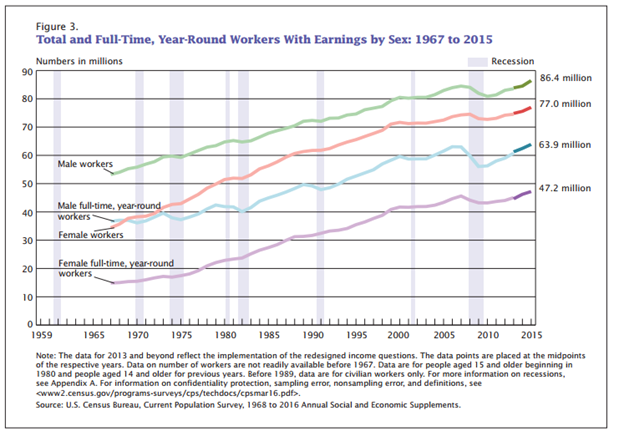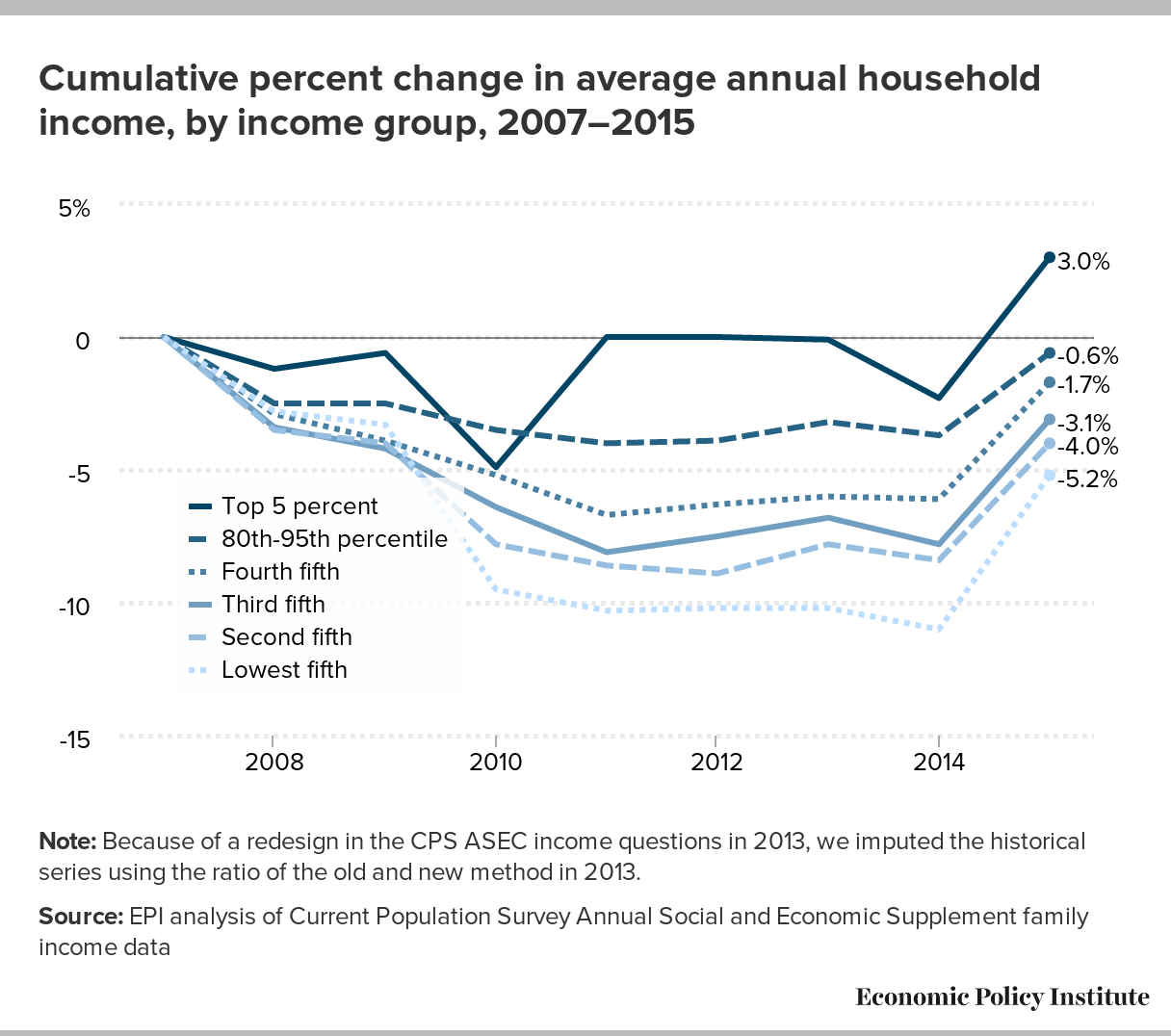But most demographics still haven’t reached pre-2008 levels.
By Dwyer Gunn
(Photo: Alex Wong/Getty Images)
Yesterday, the United States Census Bureau released its annual report on poverty and income in America. Consistent with an analysis performed earlier this year based on Internal Revenue Service data, the report concludes that Americans across the income spectrum enjoyed higher earnings in 2015. The Census Bureau calculates that real median household income increased by 5.2 percent between 2014 and 2015, the first such increase recorded since 2007, and the largest increase recorded in the data set’s history.

(Chart: Census Bureau)
The Census Bureau chart pictured to the left illustrates the income changes by race.
The analysis found that real median household income increased by 4.4 percent for white households, 4.1 percent for black households, and 6.1 percent for Hispanic households. But substantial income gaps between races persist. Low-income households, those in the bottom quintile, saw the biggest gains. The report also found an increase in the number of men and women working full-time, and the number reporting at least some earnings.

(Chart: Census Bureau)
Overall, 1.4 million more men, and one million more women, worked full-time in 2015 than in 2014, as the chart to the left points out.
The gains of 2015 mean that household incomes are slowly inching back toward pre-Recession levels. It’s worth noting, though, that only the top 5 percent of earners have actually reached pre-2008 levels. This point is illustrated in the chart below, which comes courtesy of the Economic Policy Institute, a liberal think tank.

(Chart: Economic Policy Institute)
Despite the gains of 2015, African-American households in particular are still well below pre-Recession levels. The median African-American household income in 2015 was 6.8 percent lower than it was in 2007, and 11.5 percent lower than it was in 2000.
Still, the report offers some good news on poverty. The official poverty rate declined 1.2 percentage points between 2014 and 2015, to 13.5 percent; it’s now only 1 percentage point higher than it was in 2007. All major age groups, races, and education levels saw declines in the poverty rate. And the percentage of Americans living in “deep poverty,” a subgroup that has deeply concerned academics and advocates in recent years, also declined. In 2014, 20.8 million people (6.6 percent of the population) reported a family income less than one-half of the poverty threshold for their household. In 2015, only 19.4 million (6.1 percent) people reported such an income level.
In some ways, the numbers in this report don’t come as a huge surprise, although the magnitude of the income growth is certainly impressive. Recent evidence suggests the effects of the slow economic recovery, which have so far left most Americans behind, are finally beginning to extend to low- and middle-income Americans. Wages are increasing, employers are hiring, and workers may finally be re-gaining some leverage in a tight labor market. We’ve still got a long way to go, but here’s hoping 2015 was a sign of new things to come.




